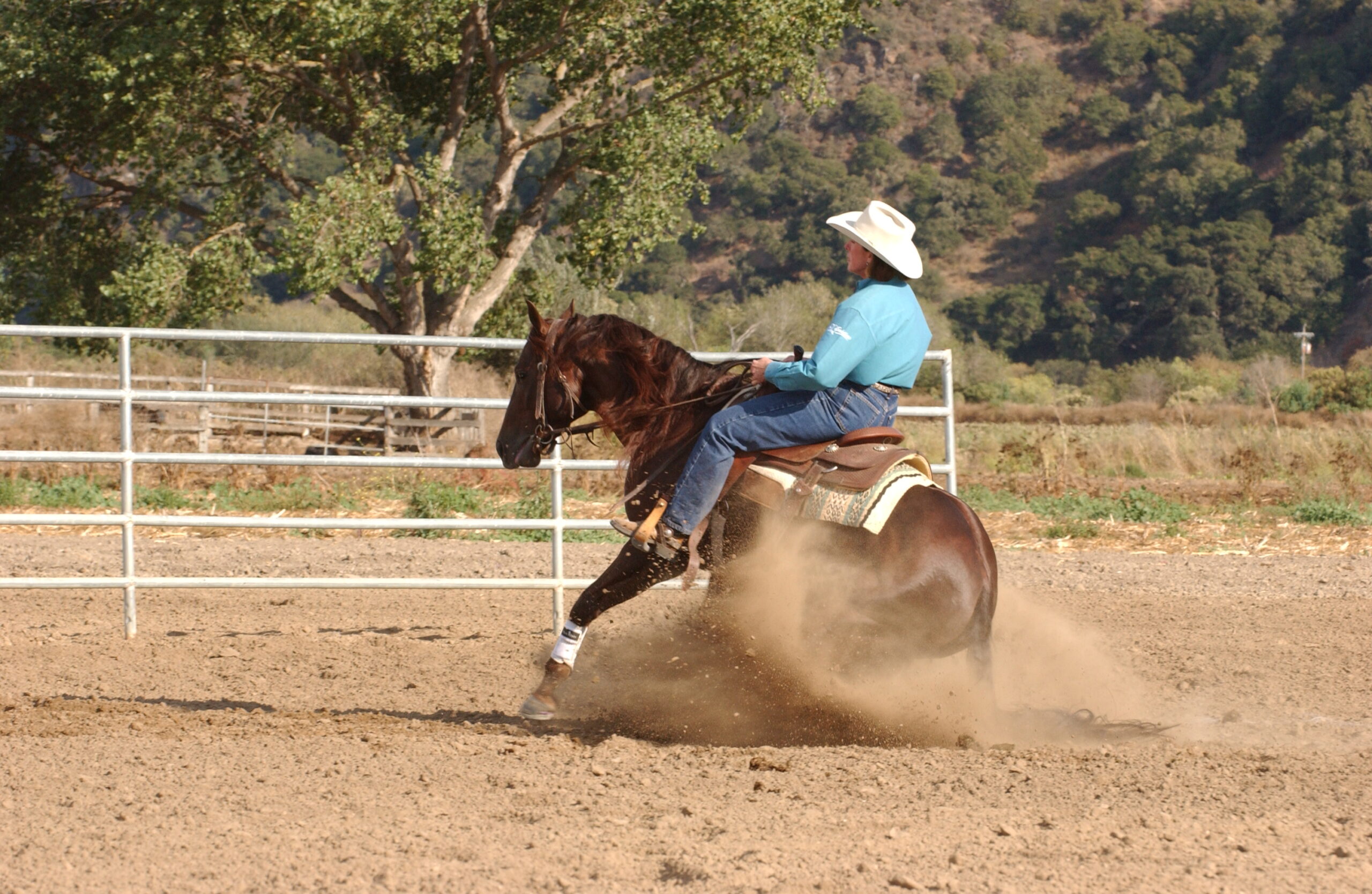We used to think “fencing” (using the fence as a barrier to help get a horse sliding in his stop) made a horse bracy in the front end. But I think we just weren’t doing it correctly.
Done properly, fencing can help teach your horse to run straight and true. This is especially important in a short arena, where your run must be as reasonably long as it can be. If your horse begins to anticipate the upcoming fence and starts to shut down, you’ll never get a good stop. “Fencing” teaches him to keep going toward the fence until you give the stop signal.
A second reason you “fence” is to encourage the horse to drive up underneath himself (push from behind) while giving in the face, raising his shoulders, and rounding his back (in other words, increase his collection—think of that accordion) without pulling on his face while sliding. You let the fence do the hard work, and you’re not the “bad guy.”

A third reason for this exercise is to help a horse who’s just beginning to slide. Once he’s loping straight in his approach to the fence, building speed as his rider dictates (never choosing his own speed), and maintaining that speed as he nears the fence, he’ll begin to understand how to keep “running” in front as he starts to slide in the back, to keep from colliding with the fence.
I’ll explain how to fence your horse at a lope; you can also perform it at a trot for the first few times.
Begin by loping your horse around for a bit until he’s no longer fresh and is beginning to think about wanting to slow down and stop. Then lope a straight line slowly through the middle of the arena toward the end fence (be sure it’s a safe one). Use your legs and reins to keep him straight and perpendicular to the fence. Continue to drive with your legs right up to the fence. When you reach it, don’t pull on the reins; let the fence stop your horse. Then stand and rest for a moment, giving your horse a pat. You want the fence to become “a good place to be” in your horse’s mind. Then repeat the entire sequence.
As your horse becomes comfortable loping straight up to the fence and stopping, you can begin to say “Whoa” just before the stop.
Over time, as your horse’s confidence in this exercise grows, begin to build speed on the approach to the fence. If your horse starts to get nervous, go back to the last speed at which he was completely comfortable, then build even more slowly from there. And, whenever you’re stopped at the fence, spend as much time as needed until your horse is calm and relaxed.

Thanks for sharing. I read many of your blog posts, cool, your blog is very good.
I don’t think the title of your article matches the content lol. Just kidding, mainly because I had some doubts after reading the article.
I don’t think the title of your article matches the content lol. Just kidding, mainly because I had some doubts after reading the article.
Sandy, Thank you for that overview of fencing your horse, and what that exercise can accomplish. I just read Juanita’s question and your answer; very neat that you were able to get so much done with your horses during the El Nino year (97 & 98?) with your suppling and collecting exercises!!! I’ve seen you compete at the SBF in Reno many times and always enjoyed your pretty riding style! 🙂
Thank you for your kind words Carol. Are you by chance Dave’s daughter? If you are please give him my best. What a wonderful man!
Hi, thanks for the tips. What would you suggest for those of us who don’t have a suitable arena surface for sliding stops but still want to encourage nice stops on the hind end to the extent we can on those surfaces for reining patterns?
Thanks, Juanita.
Hi Juanita, Is that Juanita from NZ?? Wow!! I think of you every time I pull out the telescoping whip that you gave me on one of my tris down there. How have you been? In answer to your question, the year I had my best stopping futurity horses was the El Nino year. It rained for months and I didn’t have good stopping ground until May. I did so much supplying and lots of collecting exercises that when the ground finally got good, they were strong and supple and used to having their hind qtrs driven up under them,… Read more »